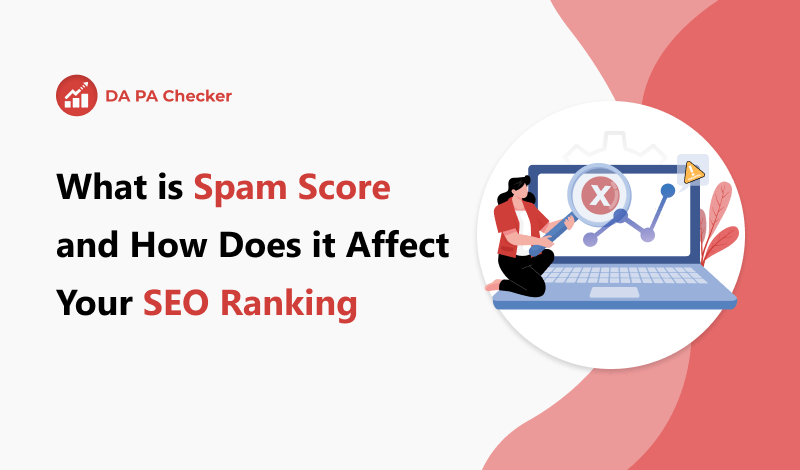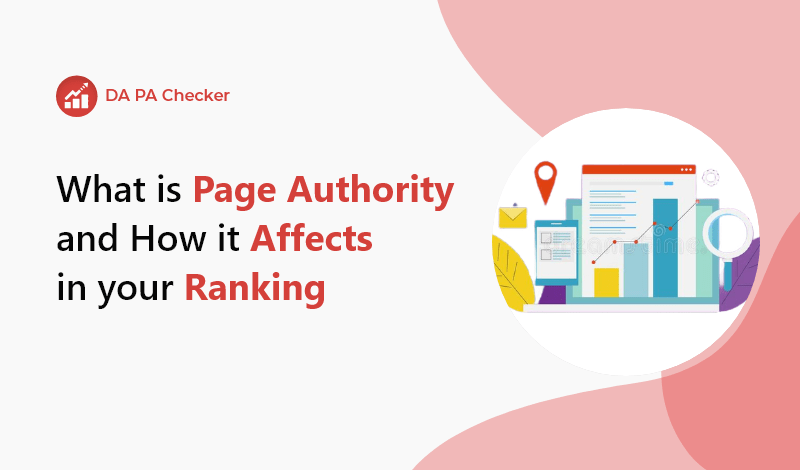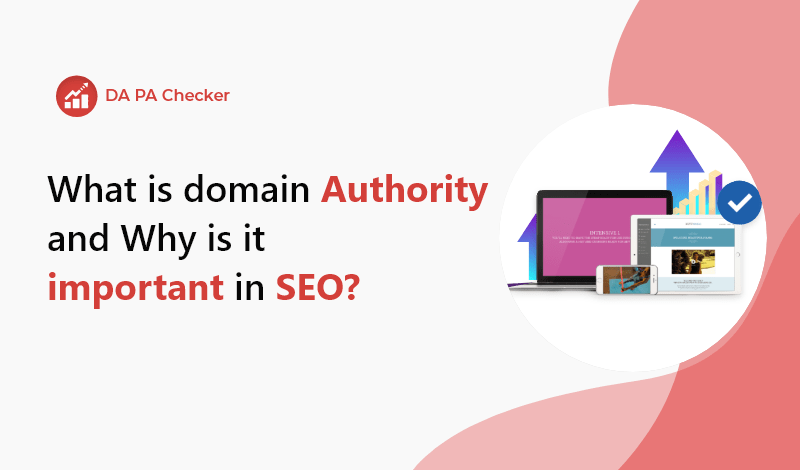What is Spam Score and how does it affect Your SEO Ranking
Sep 26, 2023

Spam Score is a metric that somewhat decides the authoritativeness of a website. This means that a high spam score indicates a less credible website and vice versa. Since it is a factor that contributes to a site's credibility, it also impacts the SEO ranking of a site.
In this article, we will share things like how and why that happens. In other words, we will break down everything there is to know about spam scores. If you are a marketer looking to improve a site’s SEO ranking, then this post can provide you with some great insights.
What is Spam Score in SEO?
In the context of SEO (Search Engine Optimization), the term "Spam Score" is often associated with a metric developed by Moz, a popular SEO software provider. Moz's Spam Score is designed to predict the likelihood that a site might be penalized or banned by search engines due to suspicious behavior or associations.
This is a generalized analogy to help you understand the concept of spam score. Now, let’s understand its impact on SEO. When your website’s spam score is high, it means that the search engine doesn’t like your site.
In such a case, the search engine doesn’t always ban the site. Sometimes, there are less harsh penalties, like lowering search engine ranking. And that is the relation between spam score and SEO. If your spam score is high for long periods of time, then its SEO performance will degrade.
Importance of Spam Score for SEO
Spam score shouldn’t only be used to monitor the downfall of a site. It is also a valuable metric to understand the weak points of a site. In other words, you can use this score to detect the issues with your site and fix them to improve its performance.
If you know the factors that affect spam scores, you can understand what is causing high spam on your site. In this way, you can make sure your site remains effective for prolonged times.
We will share the factors affecting spam scores with you as well. But before that, let’s shine a light on some other important aspects.
How to Check the Spam Score of a Website for Free?
Spam Score is actually not an official Google Ranking metric. It was actually introduced by a third-party platform known as Moz. Moz Provides SEO-related tools and services. Back in 2015, they decided to introduce some terms like spam score and domain authority. Click here to learn more about it.
So, how can we check this score that Moz created? Well, since they created it, they provide a tool to check it as well. However, their tool can only be accessed via a paid subscription. If you want to check your site’s spam score for free, you can use our Spam Score Checker.
This tool is free to use and provides great information. Also, you can check the spam scores of more than one site using this tool.
How to Use Free Tool to Check the Spam Score of a Website
- Go to DAPA Checker’s Spam Score calculator.
- Insert a website URL(s) in the input box.
- Click on ‘Check Spam.’
- Wait for the tool to process the URL.

The results will be shown to after a few moments. This result page will show you the spam score, domain authority, and page authority of the website whose URL you entered.
The Relationship between Spam Backlinks and Spam Score
Talking about the factors contributing to spam scores, low-quality backlinks are at the top of the list. If a spammy site links to your site, Google might discover the connections between you two. The same situation occurs if you link a non-credible source.
This means that the links on your site and links that lead to your site are huge contributors to shaping the spam score.
The key takeaway from this should be that you always keep an eye on the linking network of your site. Sometimes, you might link a credible source, but that source becomes unreliable after some time. If that happens, you should remove the link to that site. Things like these need to be kept under consideration constantly.
How to Find Spam Backlinks
Spam backlinks can be detected using online SEO tools. A number of SEO tools, such as SEMRush and Ahrefs, provide options to their users to perform backlink audits. In the report of these audits, you can evaluate the health of all the backlinks of your site.
Deciphering Moz Metric
You might be thinking how much of a spam score is acceptable. To answer such queries, we will show you what Moz itself says about different spam scores. According to Moz,
- 1-30% is a low spam score
- 31-60% is a medium spam score
- 61-100% is a high spam score
From this, we can calculate that 1-30% should be your site’s spam score. If it is higher than that, you should start looking for flaws in your site and fix them. But still, to stay on the safe side, we suggest you to aim for a spam score lower than 10%. This shows the website is really a credible one.
Common Factors Contributing to High Spam Scores
Here is a list of common factors that cause a high spam score.
- Low number of webpages
- Minimal user dwell time
- Spammy titles and meta descriptions
- Domain age
- Spammy internal and external links
- Low-quality content
So, if you find a high spam score on your website, these are the things that you need to look out for. A high spam score might mean your site content is of low quality in some cases. Similarly, it might also mean that you are using spammy signs like exclamation marks and dollar signs in your meta descriptions.
Once you find the problem, you can fix it and enhance your site’s overall performance. This is why spam score is an important metric. If you understand all the possible factors, it transforms from just being a number to an insightful piece of information.
Remediation and Best Practices
According to an online source, the closer your site’s spam score gets to 100, the more severe the situation becomes. So, what can you do to keep that from happening? In the following, we have shared some of the best practices to maintain a healthy score.
1. Don’t Use Spammy Words and Phrases
During your time as an internet user, you might have come across spammy websites. They are usually created so poorly that even a common man can detect it. There are certain words and phrases that these spammers use. You need to make sure that you don’t use any of those words on your site, title, or meta descriptions.
Similarly, using alternative misspellings of forbidden words should also be prohibited.
2. Optimize URL
Your URL also affects the spam status of your site. If your site’s URL has a bunch of special characters and is overly extensive, then the search engine might think of your site as spam. So, you should buy credible domains with minimal URLs.
3. Provide Value to Your Users
Whatever type of website you have, you need to make sure that it helps the target audience. If you have an e-commerce store, ensure that the quality of your products is great. Similarly, if your website is a Blog site, then you have to provide quality content that solves user queries.
If you make everything promotional or provide scam offers, then the spam score of your site is bound to rise.
4. Link Your Webpages Internally and Externally
Backlinks are what make a site trustworthy. External and internal linking are both beneficial in this regard. You have to link the webpages of your site with each other and also with other sources on the internet. Just make sure to link to authentic sources with real information.
5. Perform Site Audits Regularly
This practice is not only for maintaining a low spam score. It is also for the overall SEO of your site. If you perform regular site audits that show you site issues. Fixing these issues will gradually lower your spam score and improve your site’s SEO as a result.
Conclusion
To conclude, we can say that spam score is quite impactful regarding SEO ranking. You can not have a high spam score and have a well-placed SEO ranking at the same time. So, to get a decent position in the search results, you should focus on lowering your spam score as much as possible.
Frequently Asked Questions (FAQs)
Some common user queries are addressed here through questions and answers.
1. What is a good spam score?
An acceptable value of spam score ranges from 1% to 30%. However, the ideal case would be to have a spam score in the range of 1-10%.
2. How do I lower my spam score?
You can lower the spam score of your website by following the tips that are given in the article above. Anything that contributes to spam present on your website needs to be removed.
3. Can I check my site’s spam score on a mobile device?
Yes, you can check the spam score on a mobile device using the free tool given in this article. You can reach this site through your phone’s browser.
4. Does spam score affect ranking?
Yes, spam score affects a site’s SEO ranking. If your spam score is high, the search engine penalizes the website, taking it down or giving it a very low SERP rank.



